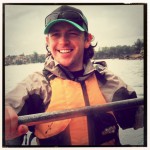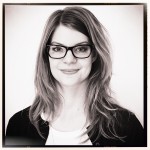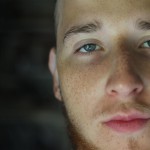Every week, a curator is invited to share five commented favourite links on the Crastina Facebok page. On this webpage, we compile the links.
Do you want to become a curator? Write an email, describe yourself, suggest a theme and send it to Olle Bergman.
There has been a hiatus here for different reasons; we’ll be back!
Week 19, 2015: Things to learn from professional designers by Matt Carter
 There are many core communication skills that could rather easily be acquired from professional designers. Our curator this week: Matt Carter who is a professor at Williams College where he teaches courses in physiology and neuroscience.
There are many core communication skills that could rather easily be acquired from professional designers. Our curator this week: Matt Carter who is a professor at Williams College where he teaches courses in physiology and neuroscience.
- Monday: Dieter Rams and Jonathan Ive talk on design. Their comments are about objects, but could easily apply to science presentations.
- Tuesday: Great guide to communicating with slides by Susan McConnell, Professor of Biology at Stanford University.
- Wednesday: TED talk by Nancy Duarte, Principle of Duarte Design, on the structure of great talks.
- Thursday: Presentation Tips from Garr Reynolds, best-selling author on presentations and design.
- Friday: The official guide to communicating with slides from the designers at TED.
•••
Week 18, 2015: Production tools & design by Álvaro De Vicente Blanco
A
 s scientists, communicating the results of our work is essential. At the end of the day, it is what gives sense to any completed work. Making good use of productivity tools saves time and money, and having a nice design to your work will make it reach a bigger and wider. Our curator this week: Álvaro De Vicente Blanco from Complutense University of Madrid.
s scientists, communicating the results of our work is essential. At the end of the day, it is what gives sense to any completed work. Making good use of productivity tools saves time and money, and having a nice design to your work will make it reach a bigger and wider. Our curator this week: Álvaro De Vicente Blanco from Complutense University of Madrid.
- Monday: Sending files through the internet has replaced traditional mailing, taking less time and effort for use to share our creations and findings. Infinit is a reliable, fast and cross-platform service that allows easy and fast file sharing between peers!
- Tuesday: Nowadays it is hard to stand out in the web, specially when it comes down to personal advertising. Individuals have found many innovative solutions to this problem. However, I suggest you to go back-to-basic, old-school style, and create a personal website at Hot Glue. Simple interfaces, ease of use and plasticity combine in a fun and free web-hosting service that will attract your visitors for sure.
- Wednesday: Another good thing about new technologies is that anyone can have access to nice tools that previously were only known by professional designers. Luckily this time, the tool is available for free. Step up your scientific presentation and poster game by making the best out of the colour wheel. If you are no expert (like myself), or if trying new styles is your thing, Adobe Color CC (previously known as Adobe Kuler) will definitely come in handy.
- Thursday: As years go by, it seems that visual content is becoming more and more important for communication. The success of companies like Sommersault 18:24 proves this notion right. Being able to create eye-catching work is not an easy task. There is a difficult balance to achieve in order to give personality and character to any scientific display of knowledge. An appropiate font may make the difference. Try these and pursue that attention-magnet look!
Friday: Cliché says ‘time is gold’, and time is definitely precious for any scientist. Being up-to-date with the new discoveries in your field of knowledge, but also in other aspects of the scientific world. Keeping yourself informed is a time-consuming activity. EurekAlert! compiles the most relevant and recent discoveries published in a broad spectrum of publications. I find myself saving a lot of time thanks to this website, specially if you pair it with a RSS/feed-subscription service, such as feedly.
•••
Week 17, 2015: Citizen Engagement in science by Marta Tondera
 How do we take science communication to the next level and involve society in research and science policy? Marta Tondera is a MSci student in Inorganic Chemistry with History, Philosophy and Social Studies of Science at University College London. She is especially interested in science and technology policy and how it can be applied to ensure responsible innovation.
How do we take science communication to the next level and involve society in research and science policy? Marta Tondera is a MSci student in Inorganic Chemistry with History, Philosophy and Social Studies of Science at University College London. She is especially interested in science and technology policy and how it can be applied to ensure responsible innovation.
- Monday: The Responsible Research and Innovation project will soon offer toolkits for researchers, citizens and governments to help them collaborate. Go to http://www.rri-tools.eu/ to learn more.
- Tuesday: Is there a way to involve more Civil Society Organisations in research? Currently only 27% of EU-funded research projects collaborate with such organisations. To learn more about how to increase this number check out the consider project http://www.consider-project.eu/. Their work is nicely summarised in this video https://www.youtube.com/watch?v=3AXBAzRnTdA
- Wednesday: Did you know that all of the EU-funded Horizon2020 research projects must include public engagement elements? There are so many way to involve the public alongiside the research process right from the planning until the end. Here is a guide showing some of the ways to do that.
- Thursday: There is a way to use scientific results in basic democratic activities – society consultations. Check out the report from the Europe Wide Views on Sustainable Consumption and see how this worked in practice.
- Friday: What happens if you let non-specialists participate in science? Amazing things! Check out a list of science projects to which everyone can contribute.
•••
Week 15, 2015: The Written Word Rules! by Vibhuti Patel
 The written word still rules, even if it has moved toward digitalization. Vibhuti Patel is studying Science Communication at the University of Otago, New Zealand. She has completed qualifications in ecology and editing and has a love for evolution and ethology.
The written word still rules, even if it has moved toward digitalization. Vibhuti Patel is studying Science Communication at the University of Otago, New Zealand. She has completed qualifications in ecology and editing and has a love for evolution and ethology.
- Monday: Bill Bryson is the author of the bestseller (and one of my all-time favourites) A Short History of Nearly Everything. Here are some tips straight from the horse’s mouth.
- Tuesday: A lot of people are in science communication simply because they want to change the world which, according to ten year old Hannah Alper, is something you don’t have to be a scientist to do. Check out her amazing blog.
- Wednesday: To become a good writer, you have to read often and widely. Here is a list of books that communicate science effectively, using narrative and elements of fiction genres.
- Thursday: A personal account of how one blogger became successful, and the opportunites that blogging can generate.
- Friday: Here’s my own blog – my attempt at putting all of the above into practice. Please feel free to leave comments, constructive criticism or feedback, and follow it if you like what you read. Thank you!
•••
Week 14, 2015: Occupy Science by Javier Rodríguez-Laguna
 Occupy Science: the ‘occupy spirit’ in science, compared to politics and other areas, such as free software. Javier Rodríguez Laguna has a Ph.D. in theoretical physics and is currently a researcher at Universidad Nacional de Educación a Distancia. He was also The Crastina Column contributor of April 2015.
Occupy Science: the ‘occupy spirit’ in science, compared to politics and other areas, such as free software. Javier Rodríguez Laguna has a Ph.D. in theoretical physics and is currently a researcher at Universidad Nacional de Educación a Distancia. He was also The Crastina Column contributor of April 2015.
- Monday: You promised colonies on Mars and you have given me Facebook. Is scientific and technological advancement slowing down?
- Tuesday: We tend to believe that science is a pure realm, an ivory tower, away from the earthly concerns, such as male chauvinism.
- Wednesday: Tim Gowers explains the epijournals idea: use the ArXiv as a storage site, and provide a quality stamp.
- Thursday: Several good reasons to trust a selected papers network.
- Friday: Too much pressure to publish can destroy the spirit of science.
•••
Week 13, 2015: Cross the boundaries: How interdisciplinary work benefits you by Karin Lauschke
 Karin Lauschke is a Master student at Københavns universitet, a young scientist dedicated to epigenetics & biotechnology and an aspiring science writer.
Karin Lauschke is a Master student at Københavns universitet, a young scientist dedicated to epigenetics & biotechnology and an aspiring science writer.
- Monday: The physicists Eric Betzig and Stefan W. Hell and chemist William E. Moerner earned the Nobel Prize in Chemistry in 2014 for their super resolution microscopy.
- Tuesday: Bringing interdisciplinary work to its limits: Now researchers even established a new field “Eco-Immunology”.
- Wednesday: How anthropologists help medics fight ebola in Guinea.
- Thursday: The world’s first working cell made from plastic, created by chemists and synthetic biologists.
•••
Week 12, 2015: Advancement and optimization of computational power by Erik Bergman
 Erik Bergman is a student at the Faculty of Engineering, Lund university.
Erik Bergman is a student at the Faculty of Engineering, Lund university.
- Monday: We live in an era where the advancement of technology is absolutely straggering. This is especially true for the power of computers where top notch technology can become redundant in a matter of years. This concept is summarized by Moore’s Law which describes the rate at which the number of transistors increase in CPUs. Some people theorize that this trend will cease to exist within a few years – what effects can we expect from this?
- Tuesday: Would you believe me if I told you that computer science predates the age of electricity? Charles Babbage’s “analytical engine” is stunning example of ingenious design an engineering which was conceptualized a century before general purpose computers started being used.
- Wednesday: When you sort the files of a folder by size or arrange a contact list in alphabetical order, it happens virtually instantaneously. But how does a computer figure this out? One might be surprised by the amount of time and effort which has historically been put into trying to find the fastest possible way to sort a series of elements. This video displays a number of methods in which a computer can work to sort a series of elements.
- Thursday: One might think that the time needed when searching is proportional to the size of the data being searched. This is however not the case thanks to searching alghorithms which make searching large data sets very effective. One example of such an alghorithm is a binary search tree. The code of a binary tree and many other data structures are intuitively visualized at visualgo.net.
- Friday: For people aspiring to become great programmers, I highly recommend learing to do it well right from the beginning. Getting code to work is only half the challenge – it also needs to be easily understood and not give your computer a headache while compiling. For this purpose, I recommend reading Effective programming: More than writing code.
•••
Week 11, 2015: The power of infographics – how picture artwork can replace a hefty amount of written communication by Fredrik Saarkoppel
 Fredrik Saarkoppel is an illustrator from Eskilstuna, Sweden. Some of his work can be found at his website kobolt.se.
Fredrik Saarkoppel is an illustrator from Eskilstuna, Sweden. Some of his work can be found at his website kobolt.se.
- Monday: Someone took a lot of different data and put it in the graphic style of the subway chart, creating a result that would take a while to comprehend in pure written form.
- Tuesday: This is an example of an image that would take hundreds of written pages to explain, and it would probably not be as easy to overview and understand anyway. Kudos to informative graphics!
- Wednesday: Obviously, photo wasn’t an option for the early scholars, so illustration was a part of a scientists toolkit and a valuable talent to have up to the 20th century and the advent of photography. Here an old medieval manuscript … (The rest of the page contains a lot of interesting old/ancient “infographics” too!)
- Thursday: Perhaps the most famous of all innovator-artists: The renaissance man Leonardo da Vinci. He showed contemporary lords designs of all kinds of gadgets and machinery, most of whom were never realised during his lifetime. I would guess that the presentations was greatly enhanced by his artistic skills … Here five of his designs put into some context.
- Friday: Illustration was of course used to picture the less accurate scientific theories of the times. Here one of the theories of parallel evolution based on racial prejudice and other pre-Darwin hypothesis’. On a footnote, I heard somewhere that Darwin was heavily critizised for his limited drawing skills ….
•••
Week 10, 2015: Natural history research is a valuable product worth funding by James O’Hanlon
 James O’Hanlon is a scientist and science communicator from Sydney, Australia. His personal website can be found on jamesohanlonresearch.wordpress.com.
James O’Hanlon is a scientist and science communicator from Sydney, Australia. His personal website can be found on jamesohanlonresearch.wordpress.com.
- Monday: Some of my best reseach has been made possible by the support of science communicators and their research funding schemes.
- Tuesday: Do you care about what science gets funded and what doesn’t? Its easy to make direct contributions to this through dedicated scientific crowdfunding websites.
- Wednesday: Do you think that it is worth investing money in exploratory or natural history research? Support industries that fund exploratory research or take matters into your own hands by contributing to publicly crowd funded campaigns. Every little bit helps!
- Thursday: One of the best reasons to support natural history research is that it can be so cheap! Good scientists can achieve so much with so little, even small donations can go on to have huge impacts on the futureof our planet.
- Friday: Pure scientific exploration, such as natural history research, requires specific skill sets. Unfortunately changes in research trends and priorities mean that these skills are being lost.
•••
Week 9, 2015: Learn to create engaging presentations by Tanja Jensen
 Tanja Jensen is a neuroscientist by training and a communicator. Find her at tanjajensen.wordpress.com.
Tanja Jensen is a neuroscientist by training and a communicator. Find her at tanjajensen.wordpress.com.
- Monday: Combining storytelling and science will make you a memorable speaker and compelling writer. Learn how you can apply storytelling into a presentation that is composed of facts, graphs, and charts .
- Tuesday: One of my favourite presentation designers, Nancy Duarte, shares her analysis on an engaging presentation structure in her TED talk.
- Wednesday: To make meaning from data scale, compare and put the numbers in a context to take your audience on a journey of discovery.
- Thursday: It´s not all about what you say, but also how you say it.
- Friday: Make yourself known and useful by sharing your research.
 Week 8, 2015: How our perception of girls affect the number of women in STEM by Sara Torstensson
Week 8, 2015: How our perception of girls affect the number of women in STEM by Sara Torstensson
Sara Torstensson is a biomedical bachelor student at Karolinska Institutet in Stockholm. She has a great interest in questions regarding gender equality and especially within academia.
- Monday: The probability of a girl getting a career in science is determined by the way we talk to her as a child.
- Tuesday: The number of women in STEM is determined as early as kindergarten.
- Wednesday: The innate ability to solve math problems and how we get the courage to try.
- Thursday: How the teacher’s bias makes boys better at math.
- Friday: How implicit bias affect the number of women in STEM.
 Week 7, 2015: Restoring creativity and other battles of medical students worldwide by Antoan Stefan Sojat
Week 7, 2015: Restoring creativity and other battles of medical students worldwide by Antoan Stefan Sojat
Antoan Stefan Sojat is a medical student at the University of Belgrade and a short video creator and editor.
http://antoanstefansojat.com/
- Monday: Should medical schools encourage a more humanist and creative approach to healing?
- Tuesday: Want to become a doctor? Many different people will try to scare you away, but here are some positive and realistic advice on how to get started.
- Wednesday: Wonderful history of medical art and how it affected all we know.
- Thursday: Extracurricular activities are the most important thing for becoming a complete person and a complete expert in any field. Browse through the site of the worlds oldest and biggest international federation of medical students and get involved.
- Friday: A provocative artistic collaboration between biologists and artists. We give to you: BioArt!
 Week 6, 2015: Graphical Abstracts by Luk Cox
Week 6, 2015: Graphical Abstracts by Luk Cox
Luk Cox is a science illustrator and molecular biologist.
http://somersault1824.com.
- Monday: A no nonsense vision about graphical abstracts by Brian Romans.
- Tuesday: Scientists are no designers, but luckily this book/website gives some practical advice for better figures and graphical abstracts.
- Wednesday: Impressive and very stimulating rework of how scientific communication could look like. Highly recommended.
- Thursday: The best graphics that appear in Nature all in one place. Source of inspiration.
- Friday: Data visualization is not boring at all, the contrary, it is beautiful. Very inspiring TED talk!


very good jon admin. very useful cute